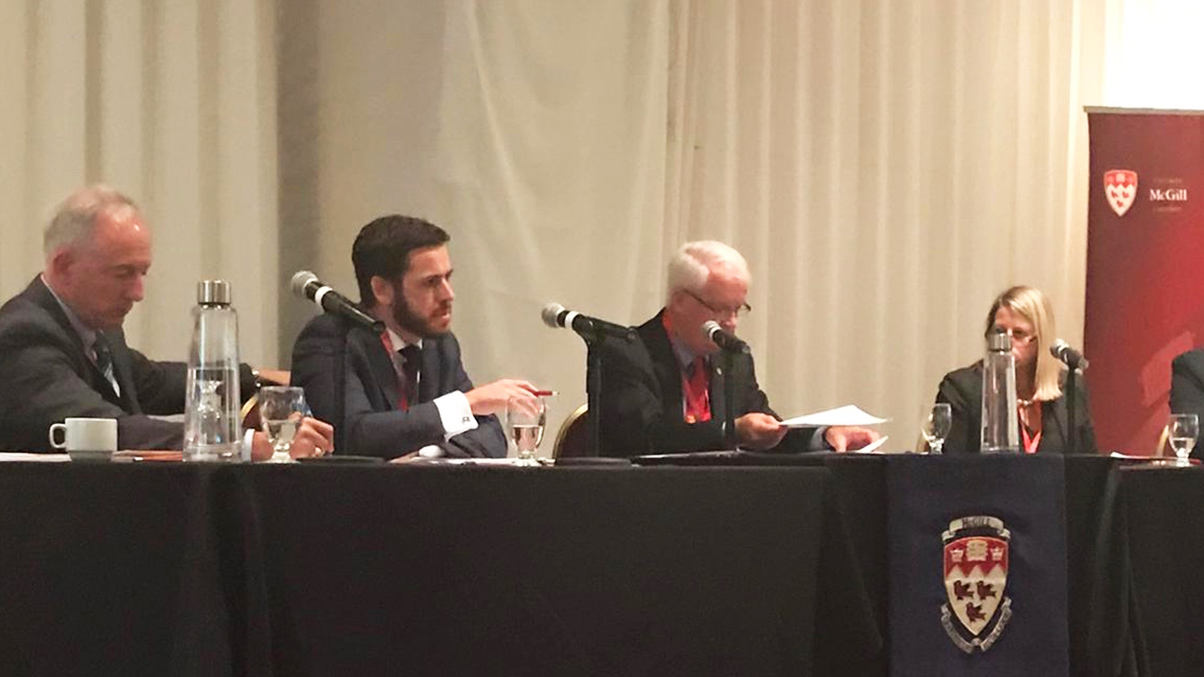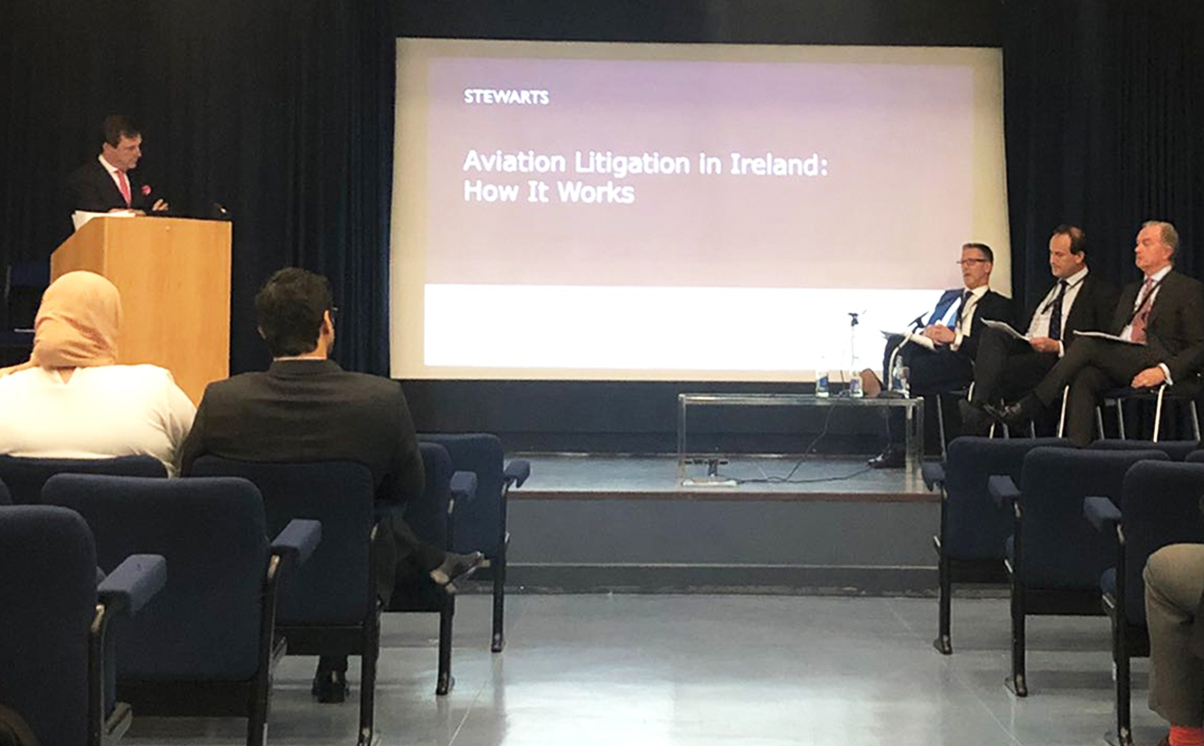For those familiar with Montreal Convention litigation, globally reported cases on the interpretation of “accident” under Article 17(1) have been limited over recent years. Pursuing a claim to trial that will turn on the interpretation of a single word carries risks for both claimants and defendants.
As explained in part one of this article, consistency among decision makers is essential. Both the House of Lords and the US Supreme Court have made the point, that where multinational treaties are being considered, regard should be had to how other State Parties have interpreted their content.
In this second part, Rebecca Smith reviews the conclusions drawn in GN v. ZU [2019], and the first recent application of GN v. ZU in YL v. Altenrhein Luftfahrt GmbH, handed down in May 2021.
GN v. ZU Case C-532/18
For the first time, the Court of Justice of the European Union considered the concept of “accident” within the meaning of Article 17(1) of the Montreal Convention.
The claimant, aged six at the time of the accident, was scalded after a hot cup of coffee fell off a tray table during a flight from Majorca to Vienna. It could not be established why the cup had fallen either by reference to any defect in the tray table or whether this was due to the vibration of the aircraft.
The claimant ultimately succeeded but the history of the case is interesting. The Regional Court in Austria had originally found in the claimant’s favour in December 2015, accepting that the “accident” was caused by an unusual event external to the claimant. In August 2016, the decision was overturned by the Vienna Higher Regional Court on the basis that the Convention covered only accidents triggered by a hazard typically associated with aviation. The matter then came before the CJEU for a preliminary ruling.
The central and very narrow question before the CJEU was:
“Where a cup of hot coffee which is placed on the tray table attached to the seat in front of a person on an aircraft, in flight, for unknown reasons slides and tips over, causing a passenger to suffer scalding, does this constitute an ‘accident’ triggering carrier liability within the meaning of Article 17(1)?”
Representations to the CJEU included those from the Polish and French governments and the European Commission.
The CJEU’s decision deals with two distinct but important questions: first, what is the definition of an “accident”, and second, does the “accident” have to arise from a hazard typically associated with aviation?
A surprising outcome of the case was that the CJEU paid no attention to case law from any state parties with regard to the definition of “accident” as a “sudden or unusual event that is external to the passenger”. Instead, their approach was that “accident” should be given its “ordinary meaning…in its context, in the light of the object and purpose of that convention” and settled on the definition of an “unforeseen, harmful and involuntary event”.
What does this mean?
For accidents arising from hazards associated with aviation, there has historically been a debate as to whether the definition of “accident” must stem from either an ‘aviation-related risk’ or an event that arises from some malfunction or abnormality in the aircraft’s operation. The basis for this analysis is that it would be unjust for airlines to be responsible in circumstances where an accident occurs because of a passenger‘s conduct. Notwithstanding this concern, Courts around the world have treated the point with caution as there is a danger that this idea is the basis for a more general assertion that the carrier must be shown to have caused the accident.
What is clear is that matters obviously remote from the flight or anything to do with the operation of the flight will fall outside the definition of “accident”. Several cases have made this point. In Curley v. American Airlines Inc. [1994], the court held the physical detention of a passenger, suspected of smoking marijuana in the aircraft toilet, was too remote from the risks of air travel to amount to an “accident”. Further, in Dogbe v. Delta Airlines [2013], it was held that a passenger, injured when forcibly removed by police and air crew after refusing to disembark when ordered, did not constitute an Article 17 “accident”.
In GN v. ZU, the CJEU held that the definition of an “accident” within the meaning of Article 17(1) covered “all situations occurring on board an aircraft in which an object used when serving passengers has caused bodily injury to a passenger, without it being necessary to examine whether those situations stem from a hazard typically associated with aviation”. The decision was made on the basis that the proclaimed aim of the Convention is to protect passengers. While the decision of the CJEU was not inconsistent with previous decisions, the specificity of this interpretation renders it somewhat useless to broader application. By specifically referencing the causative requirement that the object causes bodily injury to a passenger while it is being used for “serving passengers” effectively ties it to the operation of the airline, but gives no scope to apply the position to any factual matrix outside of service.
YL v. Altenrhein Luftfahrt GmbH (C 70/20)
In May 2021, the ECJ considered how GN v. ZU was applied in the case of YL v. Altenrhein Luftfahrt GmbH (C 70/20). The Supreme Court stayed the proceedings and referred the following question to the ECJ for a preliminary ruling: “Does a hard landing, albeit still made within the normal operating range of an aircraft, which results in injury to a flight passenger constitute an “accident” within the meaning of Article 17(1) of the Montreal Convention?”
The issue was whether the subjective perception of the injured passenger was relevant in the assessment of classifying a harmful event as unforeseen within the meaning of preceding case law and therefore an “accident” within the meaning of Article 17(1).
The Court found that where a landing has taken place in accordance with standard operating procedures and limitations applicable to the aircraft, the incident cannot be regarded as an “accident” within Article 17(1), and therefore that the subjective perception of passengers are irrelevant. This could represent an attempt to bring it more in line with preceding case law, as the Court focused on operational guidance as the key indicator in determining whether an accident occurred.
Conclusions
There is little doubt that injury claims sustained on board, whilst boarding or disembarking an aircraft will remain fact-specific.
More recent cases pose a potential difficulty in maintaining consistency in the future assessment of what constitutes an “accident”. The failure of the CJEU to consider, dismiss or approve interpretations of this phrase by other courts around the world does not assist claimants or defendants. Global uniformity is key to the interpretation of the Montreal Convention.
We now have a definition of an “accident” as an “unusual, untoward, or unexpected event” that must be external to the passenger from Saks (as applied), which may or may not need to be characterised as a positive action, and the CJEU’s definition as an “unforeseen, harmful and involuntary event”. As a result of YL we can perhaps rephrase the CJEU definition as an “objectively unforeseen, harmful and involuntary event”.
“Harmful” and “unforeseen” may at best be considered as synonyms of “untoward” and “unexpected”. The reference to “unusual” within the Saks definition is the basis for the reference to operating practices of the airline or industry standards. That has perhaps now been captured by the objective criterion applied in YL. Nevertheless, references to an “involuntary event” are simply confusing. While applicable to the case of spilt coffee, positive decisions which carriers take in breach of their operations manual would not be considered involuntary, so under the CJEU definition these would not constitute “accidents”. Likewise, the CJEU fails to consider the requirement that the event is external to the passenger, a key component of previously decided UK and US cases.
The inconsistency between the two definitions is problematic for a Convention whose purpose is to bring uniformity to aviation related liability.
Future decisions
As has been seen in YL, the courts are likely to be cautious and continue to treat each case on its facts, with GN v. ZU perhaps being restricted to those occasions where an object is used when serving passengers which then results in injury. Whilst it is clear that the “accident” must have something to do with the flight in line with other decisions, the definition of “accident” in GN v. ZU is likely to provide little assistance in cases where the argument that an “accident” arises from a hazard typically associated with aviation is less clear.
Until the end of the transition period, the United Kingdom was obliged to follow EU law, and therefore the interpretation offered by the CJEU in GN v. ZU. Post transition the approach is uncertain as there is likely to be a reluctance to follow EU law where it contradicts authoritative interpretations of other state parties.
This article was originally published in the American Association for Justice (AAJ) Aviation Law Section Community Blog. See Rebecca Smith, Impact of Recent Decisions on the Interpretation of “Accident” Under the Montreal Convention 1999, AAJ AVIATION L. SECTION BLOG (Nov. 12, 2021). Click here to learn more or become an AAJ member.
You can find further information regarding our expertise, experience and team on our Aviation pages.
If you require assistance from our team, please contact us.
Subscribe – In order to receive our news straight to your inbox, subscribe here. Our newsletters are sent no more than once a month.





